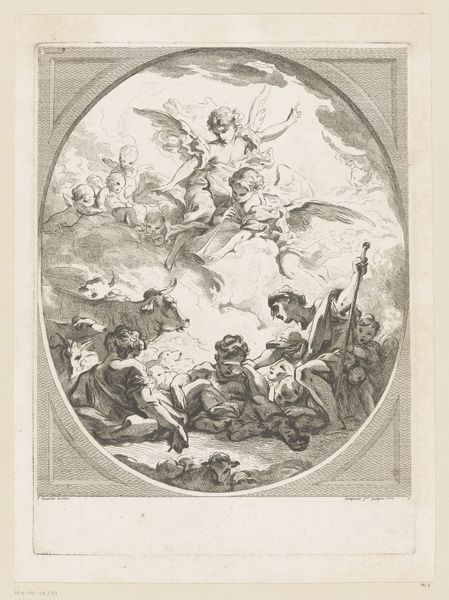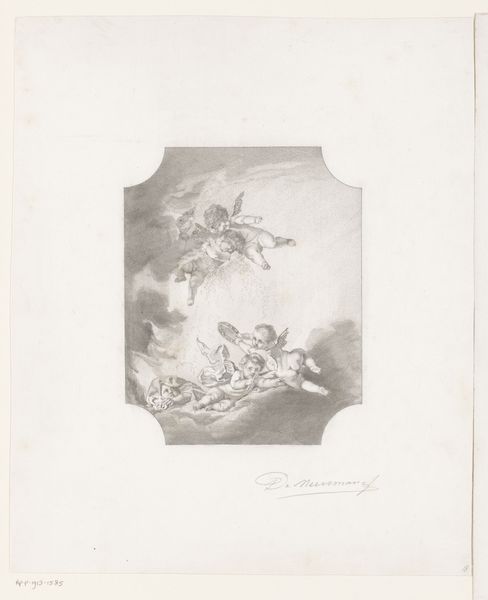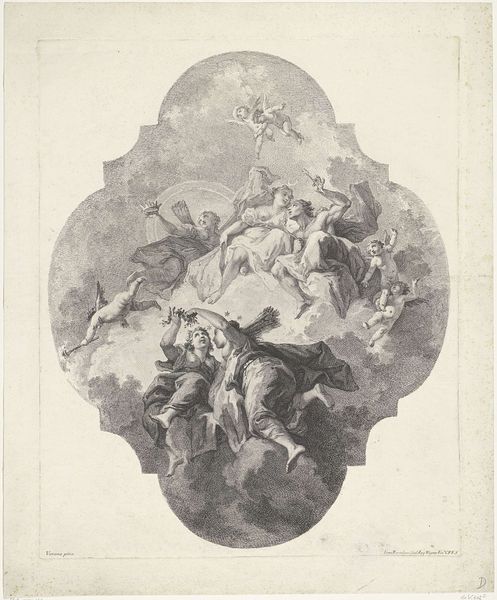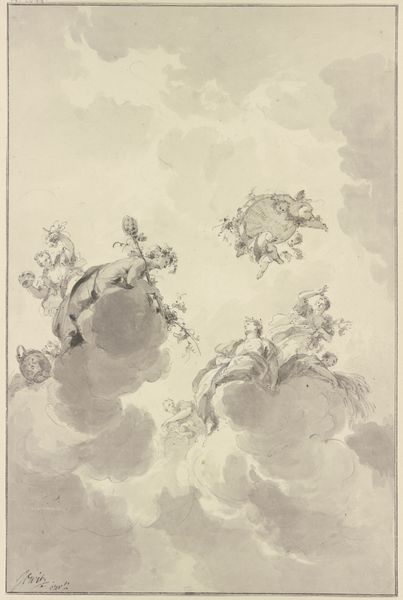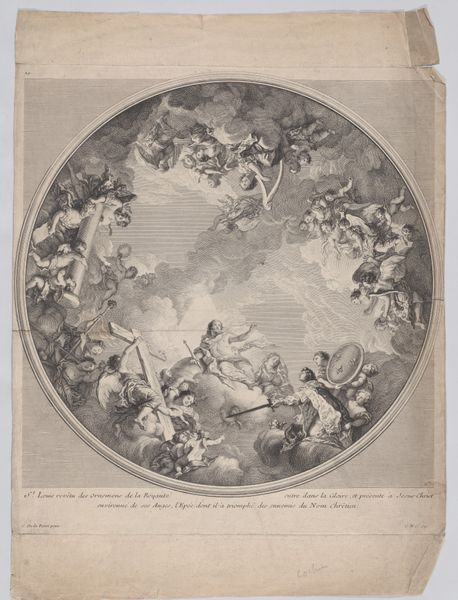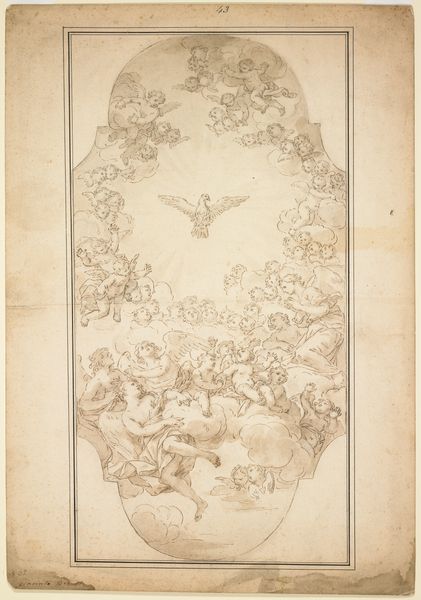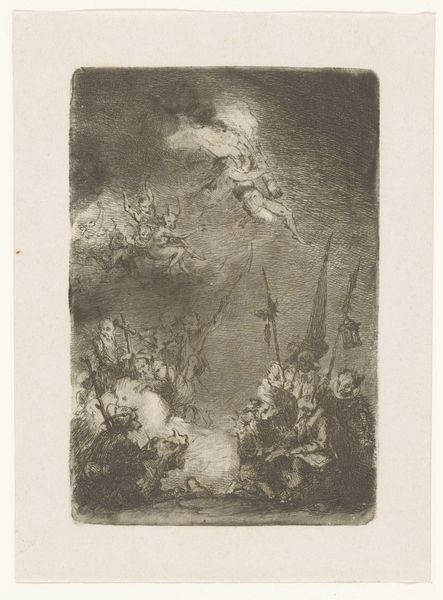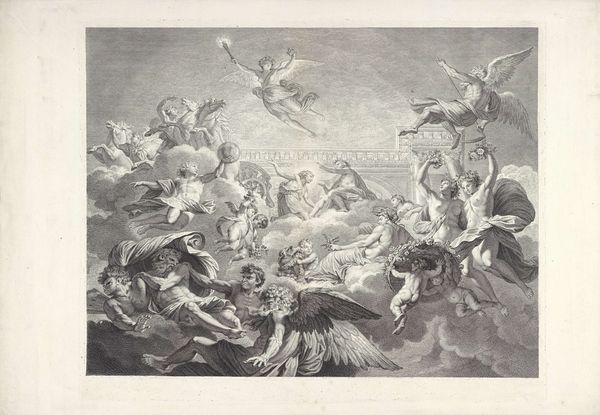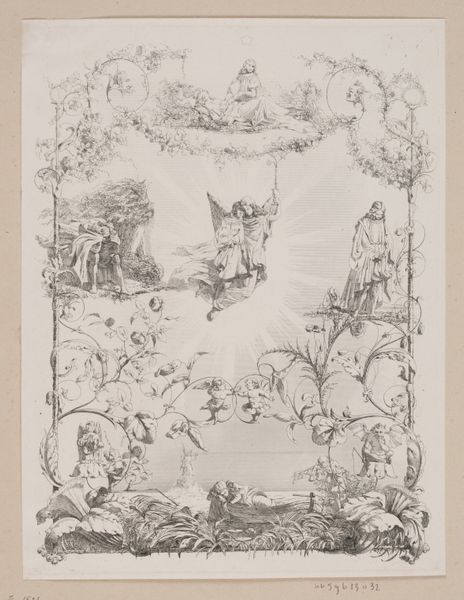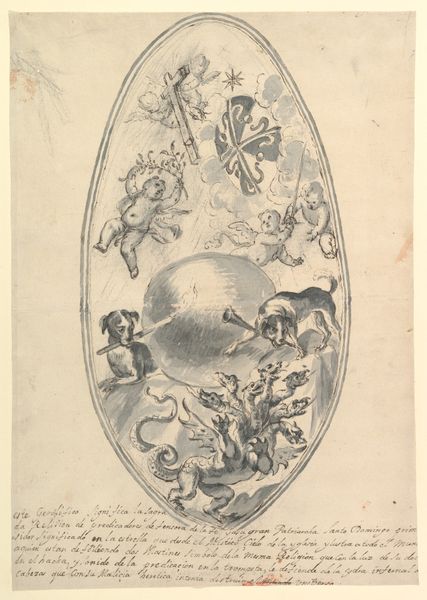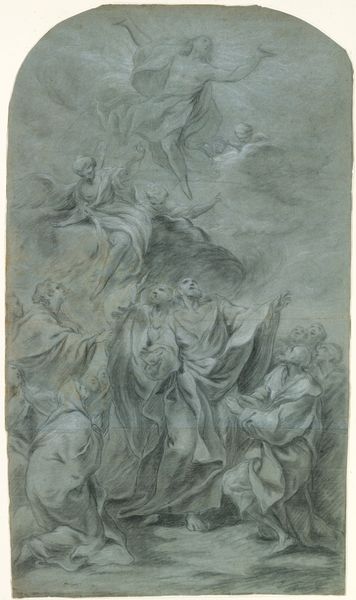
drawing, painting, watercolor, ink, indian-ink, chalk, charcoal
#
drawing
#
allegory
#
baroque
#
painting
#
charcoal drawing
#
figuration
#
charcoal art
#
watercolor
#
ink
#
indian-ink
#
chalk
#
charcoal
#
charcoal
#
watercolor
Copyright: Public Domain
Editor: We are looking at Gaspare Diziani's "Marienkrönung mit musizierenden Engeln," a Baroque drawing created with ink, watercolor, and charcoal. It strikes me as very dynamic, filled with figures ascending heavenward within this oval composition. How do you interpret this piece? Curator: This drawing is quite interesting in the context of Baroque art, particularly when we consider the period's emphasis on theatricality and the emotional impact on the viewer. The glorification of Mary, as depicted here, served as a potent image, reinforcing the Church's power through visual spectacle. What message do you think Diziani might be conveying with this dynamic composition? Editor: Perhaps it emphasizes the aspirational element of faith – everyone is ascending, actively participating. It feels almost participatory, rather than just passively religious. Do you see a political undercurrent? Curator: Absolutely. Baroque art served as propaganda. These images weren’t just decorative, but powerful tools wielded by both the church and aristocracy to maintain their dominance and instill awe. Do you see how the ascending figures direct the eye upward, towards the apex of divine authority? How does the use of lighter and darker areas impact that reading? Editor: That makes sense, it forces the eye upward toward God the Father and the Holy Spirit above the Virgin Mary. That contrast enhances the dramatic effect and emphasizes their central position in the divine hierarchy. Thanks, that contextual layer really transforms how I see the piece! Curator: Indeed, understanding the socio-political backdrop illuminates the motivations behind such art, reminding us that art rarely exists in a vacuum, always embedded in a larger societal framework.
Comments
No comments
Be the first to comment and join the conversation on the ultimate creative platform.

